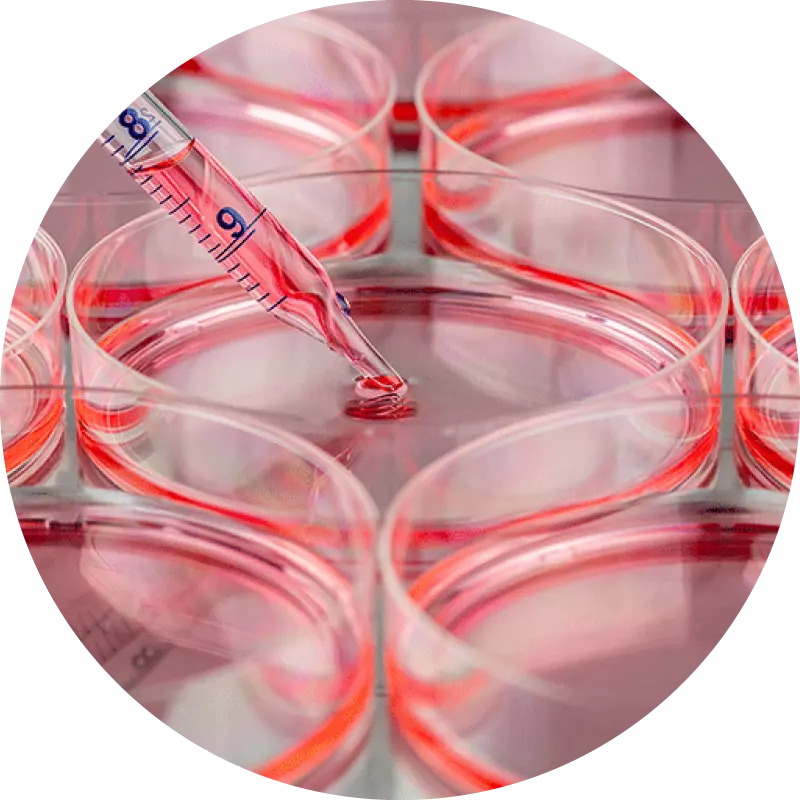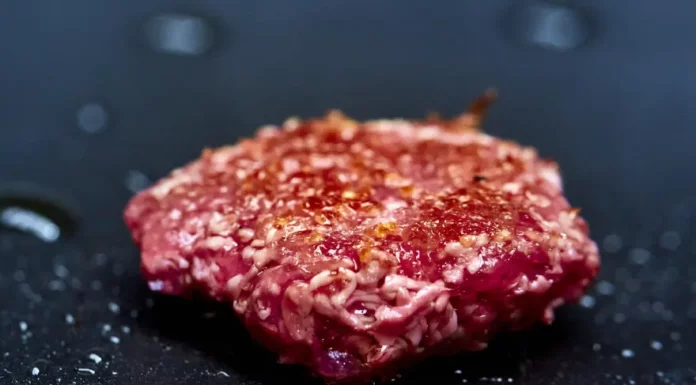Introduction
Lab-grown meat represents a pivotal shift in food production, born from cellular agriculture techniques that cultivate meat from animal cells without slaughter. As of 2025, the sector is advancing rapidly, with companies like GOOD Meat and Upside Foods scaling up amid a projected market growth to $229 billion by 2050 at a 30.8% CAGR [1]. This innovation addresses the staggering toll of conventional meat: in 2022, 82 billion land animals were slaughtered globally to produce 361 million tons of meat [3]. Proponents highlight potential reductions in carbon footprints—up to 92% for beef and 44% for pork when using renewable energy [2]. However, a 2025 review in Critical Reviews in Food Science and Nutrition questions these claims, pointing to energy intensity and nutrient trade-offs [7]. Drawing from lifecycle assessments and social media debates, this piece examines the balance between hype and reality, incorporating degrowth perspectives that advocate reducing overall meat consumption for true ecological resilience.
Environmental Benefits and Sustainability Claims
Lab-grown meat’s core appeal lies in its potential to mitigate the environmental harms of traditional farming. According to the Good Food Institute, it could cut beef’s carbon footprint by 92%, pork by 44%, and rival chicken’s efficiency with renewable energy [2]. Electricity dominates its emissions, but switching to renewables might reduce this by 70% [2]. A 2025 Suscof analysis reinforces this, showing significant drops in water use, land needs, and emissions compared to factory farming [G13].
Expert analyses, such as a 2011 LCA in Environmental Science & Technology, project cultured meat as more efficient, with up to 99% less land and 78-96% less water than beef [G5]. Recent social media discussions echo this, with posts highlighting 7-45% lower energy use overall [G20]. Yet, these benefits are context-dependent: optimized bioreactors align with Paris Agreement goals, per a 2025 Critical Reviews reassessment [G1]. As one expert noted in a Stanford Report interview, advancements like larger cultivated products (e.g., Japan’s 7 cm chicken nugget) mark progress toward realistic, low-impact alternatives [4].
Challenges and Criticisms
Despite promises, lab-grown meat faces significant hurdles. Critics argue its carbon footprint could be 4-25 times higher than beef due to energy-intensive bioreactors, as per MIT Technology Review analyses [G3]. A 2023 study cited in social media posts warns of greater global warming potential without scalable renewables [G15], [G17]. Dependency on fetal bovine serum (FBS) adds ethical and environmental costs, though alternatives are emerging [G4].
A 2025 Nature article critiques it for threatening food sovereignty, potentially entrenching industrial systems over equitable solutions [5]. Economic viability is questioned too; high infrastructure demands strain grids, especially in fossil-fuel regions [G7]. Social media sentiment reflects polarization, with high-view posts decrying it as “worse for the climate” [G15]. Analyses suggest a “tech trap,” where investments lock in energy-heavy models, ignoring supply chain impacts like waste management [G6].
Technological Innovations and Solutions
Innovation is key to overcoming these barriers. The UK IBME project (2024-2026) develops non-dividing cell biocatalysts to recycle bioreactor waste, boosting sustainability and cutting costs [3]. Co-locating facilities near renewables optimizes energy use, per Good Food Institute designs [2]. Advances in bioprocesses, like cell suspension in gels for larger products, show promise [4].
A 2025 SSRN paper emphasizes breakthroughs for scalability, including automation by firms like Vow [6]. Emerging trends include AI-optimized bioreactors and FBS alternatives, potentially aligning with degrowth by enabling “meat minimalism” [G14]. Constructive solutions under study, such as hybrid plant-cultured proteins, offer cost-effective paths, reducing energy demands while addressing overconsumption [G11].

Economic Viability and Scalability Issues
Scaling remains a bottleneck. Regulatory complexities in 2025, with tightening rules and investor reevaluations, hinder adoption [1]. A Newstrail report notes market growth driven by sustainability, but upfront costs exceed $100 per pound [G8]. Expert views warn of corporate monopolies sidelining small farmers [G10].
Balanced perspectives from social media highlight discrepancies: some studies claim fractional energy use, others up to 25 times more, depending on grids [G18], [G19]. Solutions include subsidies and regulatory clarity, as in US approvals, to harmonize standards globally [G12].
Alternative Perspectives: Degrowth and Systemic Change
Degrowth advocates argue lab-grown meat is a “tech fix” perpetuating overconsumption, per a 2025 Sustainability Science article [G14]. It calls for slashing meat intake to curb extinction risks—ruminant meat’s impact is 100-1000 times that of plants [G20]. Critiques urge complementary strategies, like prioritizing legumes over industrial alternatives [5].
This view balances optimism: while tech reduces footprints, true sustainability demands cultural shifts, integrating cultivated meat for niche needs without expanding markets.

KEY FIGURES
- The global market for lab-grown meat is projected to reach $229 billion by 2050, with a compound annual growth rate (CAGR) of 30.8% (GlobeNewswire via DigiComply) [1].
- Cultivated meat could reduce the carbon footprint of beef by up to 92%, pork by 44%, and be competitive with chicken when produced using renewable energy (Good Food Institute) [2].
- Electricity use at production facilities accounts for the vast majority of cultivated meat’s carbon footprint, with potential reductions of 70% by switching to renewable energy sources (Good Food Institute) [2].
- In 2022, 82 billion land animals were slaughtered globally to produce 361 million tons of meat (IBME project) [3].
RECENT NEWS
- Lab-grown meat is seeing rapid advancements in 2025, with companies like GOOD Meat, Upside Foods, and Vow scaling production amid tightening regulations and investors reevaluating (DigiComply, 2025) [1].
- Japan produced a record-setting cultivated chicken nugget measuring 7 cm by 2 cm, marking progress towards realistic lab-grown meat products (Stanford Report, May 2025) [4].
- The industry faces regulatory complexities and questions about scalability, as governments and markets adjust to this emerging technology (DigiComply, 2025) [1].
STUDIES AND REPORTS
- A detailed lifecycle assessment (LCA) shows cultivated meat’s carbon footprint is lower than beef and some other conventional meats, especially when renewable energy is used; however, the footprint is highly dependent on energy sources (Good Food Institute) [2].
- A 2025 review in Critical Reviews in Food Science and Nutrition reassesses the sustainability claims of cultured meat, indicating that while it has potential, concerns remain about energy intensity, nutrient profiles, and environmental trade-offs [7].
- A 2025 Nature article critiques cultured meat’s promise, warning that it may threaten food sovereignty and potentially perpetuate industrial food systems rather than solving overconsumption or inequity issues [5].
- The UK IBME-funded project (2024-2026) is developing a non-dividing cell biocatalyst to convert metabolic waste from cell cultures into useful components, aiming to improve environmental sustainability and reduce costs (IBME) [3].
- A 2025 SSRN paper discusses the science, market potential, and future outlook of lab-grown meat, emphasizing the need for technological breakthroughs and regulatory clarity for scaling [6].
TECHNOLOGICAL DEVELOPMENTS
- Development of non-dividing cell-based biocatalysts to recycle waste products in bioreactors, potentially lowering environmental impact and production costs (IBME project, 2024-2026) [3].
- Advances in bioprocess and facility design focus on co-locating production near renewable energy sources to maximize sustainability (Good Food Institute) [2].
- Successful production of larger, more realistic cultivated meat products such as chicken nuggets, using cell suspension in gels and specialized devices (Stanford Report, 2025) [4].
- Increasing automation and scale-up efforts by companies like GOOD Meat and Upside Foods to meet projected market demand, requiring significant infrastructure investments (DigiComply, 2025) [1].
MAIN SOURCES
- https://www.digicomply.com/blog/lab-grown-meat-challenges-and-innovations-for-2025 – Industry overview, market projections, regulatory challenges
- https://gfi.org/science/the-science-of-cultivated-meat/ – Lifecycle assessment, carbon footprint, sustainability analysis
- https://ibme.ox.ac.uk/research/tissue-engineering/research-areas/simcells-for-cultured-meat/ – UK project on improving cultured meat sustainability
- https://news.stanford.edu/stories/2025/05/four-questions-david-lobell-alternative-meats – Expert interview on lab-grown meat and sustainability
- https://www.nature.com/articles/s44264-025-00058-0 – Critical perspective on cultured meat and food sovereignty
- https://papers.ssrn.com/sol3/papers.cfm?abstract_id=5416817 – Scientific and market analysis of lab-grown meat
- https://www.tandfonline.com/doi/full/10.1080/10408398.2025.2461262 – Review questioning sustainability claims of cultured meat
—
This synthesis shows that lab-grown meat offers significant potential to reduce greenhouse gas emissions and land use compared to traditional meat, especially if renewable energy powers production. However, energy demand, infrastructure scale-up, and current reliance on inputs like fetal bovine serum remain key challenges. The technology is advancing rapidly with promising innovations in waste recycling and bioprocess design, but economic viability and regulatory frameworks are still evolving. Critiques highlight risks of perpetuating industrial food systems and call for complementary strategies such as reducing overall meat consumption for true sustainability.
Propaganda Risk Analysis
Score: 7/10 (Confidence: medium)
Key Findings
Corporate Interests Identified
Traditional meat industry players (e.g., beef producers) appear to benefit from narratives emphasizing lab-grown meat’s high energy demands, as seen in web articles discussing greenwashing by Big Meat to downplay their own climate impacts. Lab-grown companies are mentioned in contexts of renewable energy optimizations, potentially indicating self-promotion to counter criticism.
Missing Perspectives
Voices from environmental scientists advocating for plant-based alternatives or updated 2025 innovations in lab-grown meat efficiency are underrepresented; critics of traditional beef’s deforestation and methane emissions are often sidelined in favor of anti-lab-grown sentiments.
Claims Requiring Verification
Claims of lab-grown meat requiring ‘fractional energy’ with renewables versus ’25 times higher’ than beef are based on outdated or assumption-heavy studies (e.g., pre-2025 models not accounting for scalable renewable integrations), leading to conflicting statistics without recent verification.
Social Media Analysis
Posts found on X from 2023-2025 show a pattern of amplified claims that lab-grown meat is significantly worse for the climate than beef, often linking to studies on energy intensity. Recent 2025 discussions introduce nuances like renewable energy potential but still highlight discrepancies in energy assumptions, with some users advocating for shifts away from animal agriculture overall. Sentiment is mixed, with high engagement on skeptical posts.
Warning Signs
- Selective quoting of ‘worse for the climate’ without balancing recent innovations in energy efficiency or renewable sourcing
- Fragmented references to energy claims that echo older, potentially industry-influenced studies without citing 2025 advancements
- Potential greenwashing by framing lab-grown meat as a flawed solution while downplaying traditional meat’s broader environmental harms like land use and emissions
- Patterns of misinformation amplification on social media, where viral posts exaggerate energy drawbacks without context on production scaling
Reader Guidance
Other references :
digicomply.com – Lab-Grown Meat: Challenges and Innovations for 2025
gfi.org – The science of cultivated meat | GFI – The Good Food Institute
ibme.ox.ac.uk – 2025: SimCells for Cultured Meat – IBME
news.stanford.edu – Food expert David Lobell dishes on lab-grown meat – Stanford Report
nature.com – Cultivating control? How cultured meat threatens Food Sovereignty
papers.ssrn.com – Lab-Grown Meat: Understanding Its Science, Market Potential, and …
tandfonline.com – Full article: Reassessing the sustainability promise of cultured meat
csgmidwest.org – Though not yet on grocery shelves, lab-grown meat is focus of new …
meco.com – Examining the Sustainability of Lab-Grown Meat Production – MECO
tandfonline.com – Source
geneticliteracyproject.org – Source
technologyreview.com – Source
gfi.org – Source
pubs.acs.org – Source
link.springer.com – Source
codeblue.galencentre.org – Source
newstrail.com – Source
emagazine.com – Source
mdpi.com – Source
peta.org – Source
suscof.com – Source
link.springer.com – Source
x.com – Source
x.com – Source
x.com – Source
x.com – Source
x.com – Source
x.com – Source



